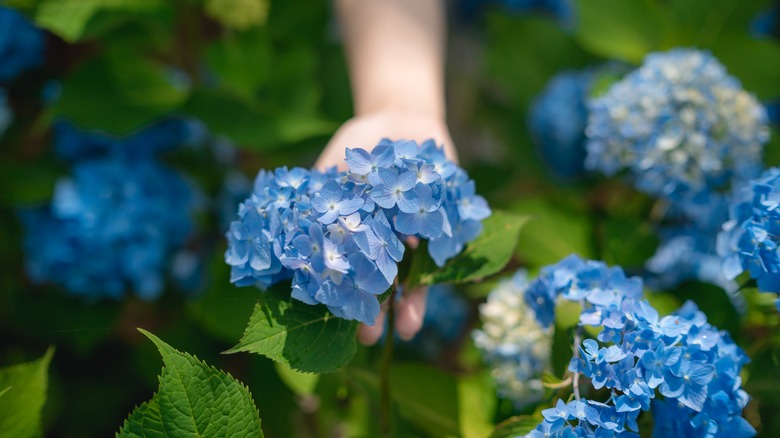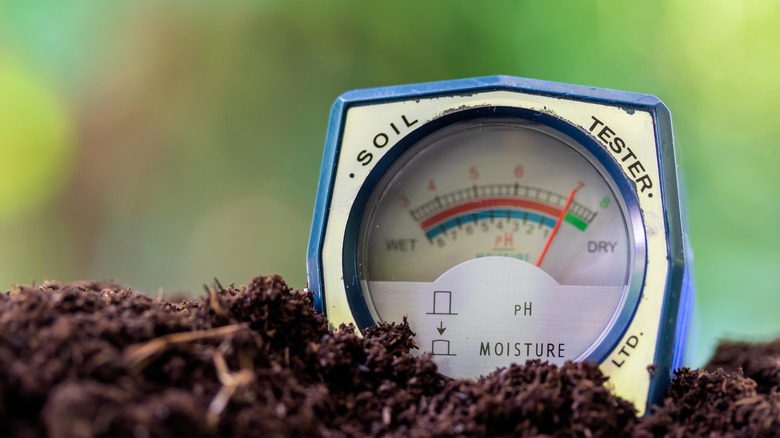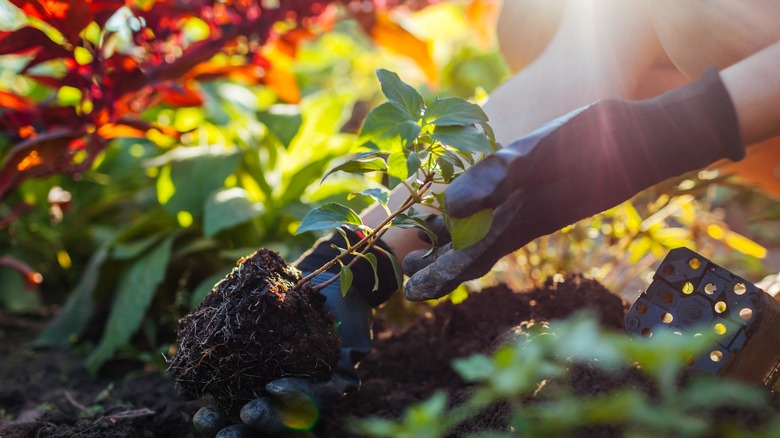Why You Should Think Twice Before Planting Blue Hydrangeas Near Concrete Walkways
We may receive a commission on purchases made from links.
When planning out a garden, most people have some idea in mind of where they want things to go. Certain flowers go here, others go there, and so on. And for something like bigleaf hydrangeas (Hydrangea macrophylla), well, those beauties you want to feature front and center, possibly right by those concrete walkways leading up to your front porch or back patio. But hold your trowels! Before you get down and dirty and start planting, it might be worth knowing that where you are planting them could make all the difference when it comes to changing the color of hydrangeas – specifically mophead and lacecap types as well as H. serrata cultivars.
You see, the hue of hydrangeas, particularly the striking blue ones, is influenced by the soil's pH. That means how much acidity or alkalinity you have in your soil will turn your hydrangeas certain colors – more acidic soil with a pH below 6.0 will produce more blue-toned flowers, while on the other hand, more alkaline soil with a pH above 7.0 will come out pinkish or red. Where does concrete come into play? Well, concrete can tweak this pH balance in some interesting ways. If you plant your hydrangeas too close, you could start seeing colors you weren't expecting.
How does concrete affect soil pH?
The thing about concrete is that as it weathers, it can actually leach lime, which happens because the water leaking through the concrete slowly dissolves the calcium hydroxide within the material. This, in turn, raises the pH of the surrounding soil and turns it from acidic to being more alkaline. For hydrangea lovers, that means a major shift away from the blue hues they may have been dreaming of, and takes your flowers into a more pinkish hue. Now, this is not exactly a bad look unless you are deliberately going for that beautiful blue hue that hydrangeas are so well known for. Other causes of alkaline soil are calcium carbonate-rich rocks weathering over time, as well as hard water that has high mineral content washing into the soil, so make sure you check for these as well.
Not sure if you're planting too close to concrete and getting that more alkaline soil? You can always double-check your soil's pH with a testing kit, such as this well-reviewed one you can buy straight off of Amazon. Simply check to make sure your soil is within range of acidity that will give you a more blue hue. After figuring out your soil, pay attention to the general guidelines for planting hydrangeas – they thrive in partial to full sunlight, require consistently moist, well-drained soil, prefer USDA growing zones 3 to 9, and need pruning in late winter or early spring to remove dead stems.
How can you make sure your hydrangeas stay blue?
So, what can you do to make sure your hydrangeas stay blue? First, aim to plant your hydrangeas in areas away from concrete's alkaline influence. This includes concrete pavers, walkways, and fence bases, so it would be better to plant them in more central locations clear of all concrete.
Another thing you can try is adding things that will change your hydrangea's color. For this, you will want to add some aluminum (which will increase the soil's acidity) in the form of aluminum sulfate. It is recommended that you add a solution of 1 tablespoon of aluminum sulfate in a gallon of water and apply that to your plants and the soil throughout the growing season. Do remember to water your plants well ahead of applying the solution and use it sparingly, as using too much can burn your roots.
Finally, if you don't want to worry about the soil itself, take your hydrangeas out of the garden and put them in pots instead. That will allow you to have full control over the soil's pH. This means, in turn, you can better choose what color blooms you want.


